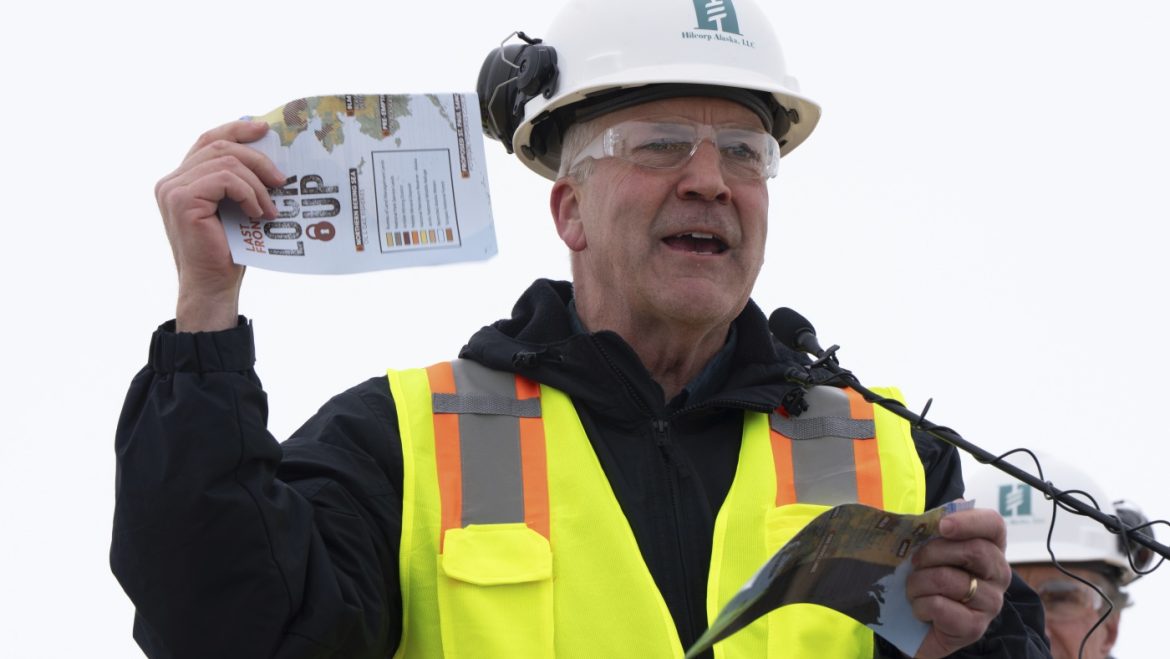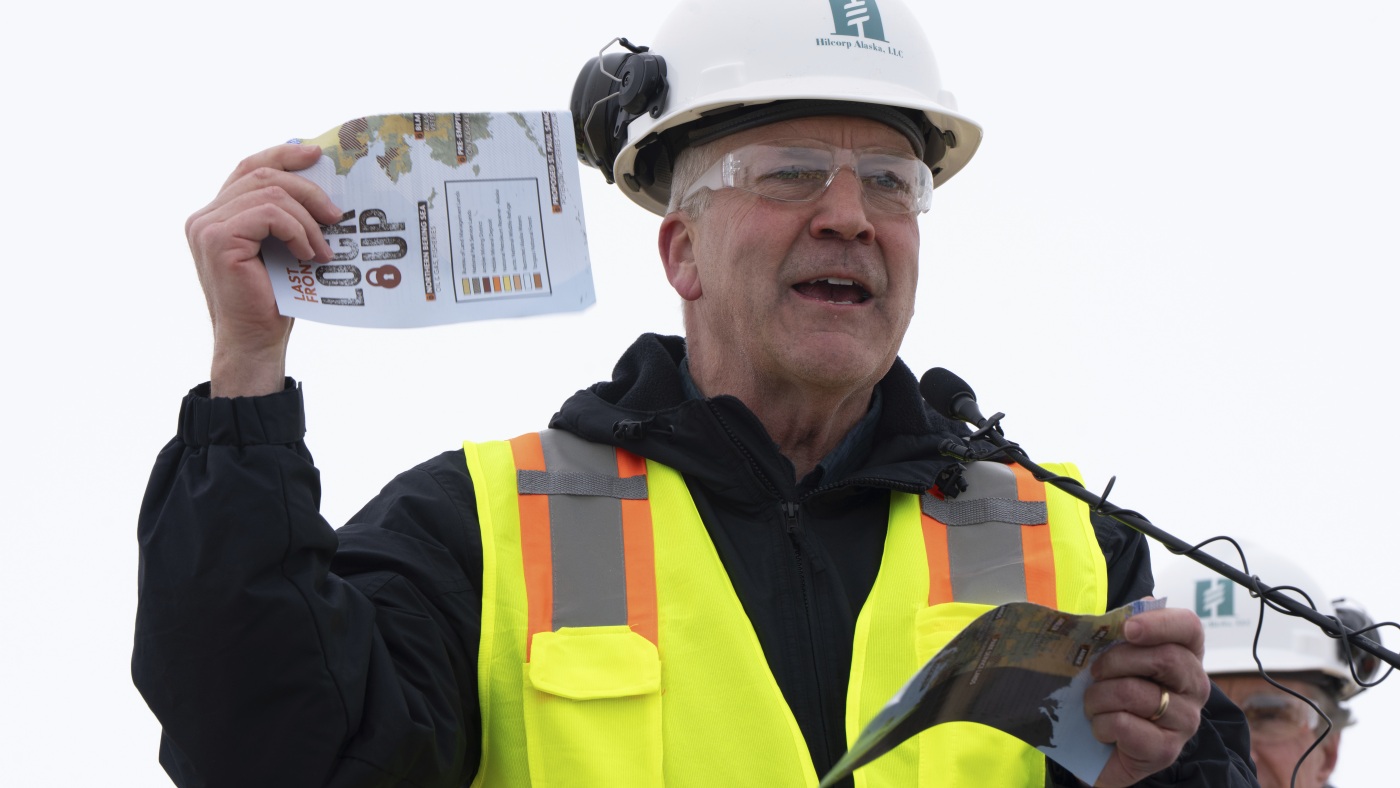Expanding Alaska’s Energy Frontier: Trump Administration’s Push for Oil and Gas Development
Recent high-profile visits by key Trump administration officials to a prolific oil field near the Arctic Ocean in Alaska underscore a strategic initiative aimed at significantly expanding the state’s oil and gas production. This initiative reflects President Donald Trump’s broader energy policy ambitions, which focus on maximizing domestic energy output by expanding drilling, mining, and logging activities within Alaska’s vast and resource-rich landscapes.
—
Overview of the High-Level Visit and Objectives
Three top Trump Cabinet members—Interior Secretary Doug Burgum, Energy Secretary Chris Wright, and Environmental Protection Agency Administrator Lee Zeldin—embarked on a multi-day tour at Prudhoe Bay, one of Alaska’s most productive oil fields. Their visit serves both practical and symbolic purposes: inspecting critical operations while signaling strong federal support for Alaska’s energy sector expansion.
A principal goal highlighted by Energy Secretary Chris Wright is to double the amount of oil transported through Alaska’s 800-mile Trans-Alaska Pipeline System (TAPS). This pipeline, a backbone of domestic oil transportation since the 1970s, is vital for moving crude oil from the Arctic North Slope to the southern port of Valdez. Increasing throughput would not only boost Alaska’s economy but also enhance U.S. energy security by reducing reliance on imported oil.
Moreover, officials discussed plans to build a massive natural gas export project envisioned as the “big, beautiful twin” of the oil pipeline. This initiative targets the development of Alaska’s abundant natural gas reserves, creating infrastructure to deliver not just crude oil but also liquefied natural gas (LNG) to domestic and international markets.
—
Strategic Implications of Expanding Drilling and Infrastructure
The push to expand drilling goes hand-in-hand with broader resource extraction goals, including mining and logging, reflecting the administration’s agenda to unlock the economic potential of federal lands in Alaska. Alaska’s untapped petroleum reserve, particularly areas like the National Petroleum Reserve-Alaska (NPR-A), has vast potential reserves that energy companies are eager to develop under a streamlined regulatory framework promoted by the Trump administration.
Support from local Alaska stakeholders, including some Alaska Native leaders in communities like Utqiagvik, indicates a nuanced landscape of backing for increased resource development. These leaders often emphasize the potential economic benefits and jobs creation for their communities while navigating environmental and cultural concerns.
—
Environmental and Political Context
The expansion of drilling and resource extraction in Alaska inevitably raises environmental concerns, particularly given the fragile Arctic ecosystem and the ongoing global dialogue about climate change. The Trump administration’s approach includes rolling back some restrictions that had been established to protect Alaska’s environment, aiming to reduce regulatory burdens to accelerate development.
However, this approach has drawn criticism from environmentalists and some political figures who argue that the potential consequences include ecosystem degradation, impacts on wildlife, and contributions to global greenhouse gas emissions. These tensions illustrate the complex balancing act between economic development and environmental stewardship in one of the world’s most ecologically sensitive regions.
—
Significance for Alaska and National Energy Policy
Alaska’s energy resources have long been crucial to the U.S. energy portfolio, but production has fluctuated over the decades. The Trump administration’s agenda seeks to reinvigorate local energy industries and pipeline infrastructure, which could lead to a resurgence in domestic energy production and exports, enhancing the U.S.’s position in global energy markets.
By aiming to double the oil flow and build significant natural gas export capacity, the administration targets a dual advantage: meeting growing global energy demand while fostering economic growth in resource-dependent Alaskan communities. If executed effectively, this strategy might stimulate infrastructure investments, increase employment opportunities, and generate substantial state revenue.
—
Conclusion: Charting the Path Forward for Alaska’s Energy Future
The visit of top Trump officials to Alaska’s prolific oil fields symbolizes a decisive push to accelerate and expand energy development in the state. This initiative seeks to augment pipeline capacity, launch major natural gas projects, and unlock Alaska’s vast natural resource potential under a policy framework that favors development over stringent regulation.
As Alaska positions itself as a critical player in the national energy strategy, the challenge will lie in balancing ambitious economic objectives with environmental sustainability and respect for indigenous interests. The outcome of this push will not only shape Alaska’s economic landscape but also influence broader discussions about America’s energy independence and environmental responsibilities in the coming decades.


